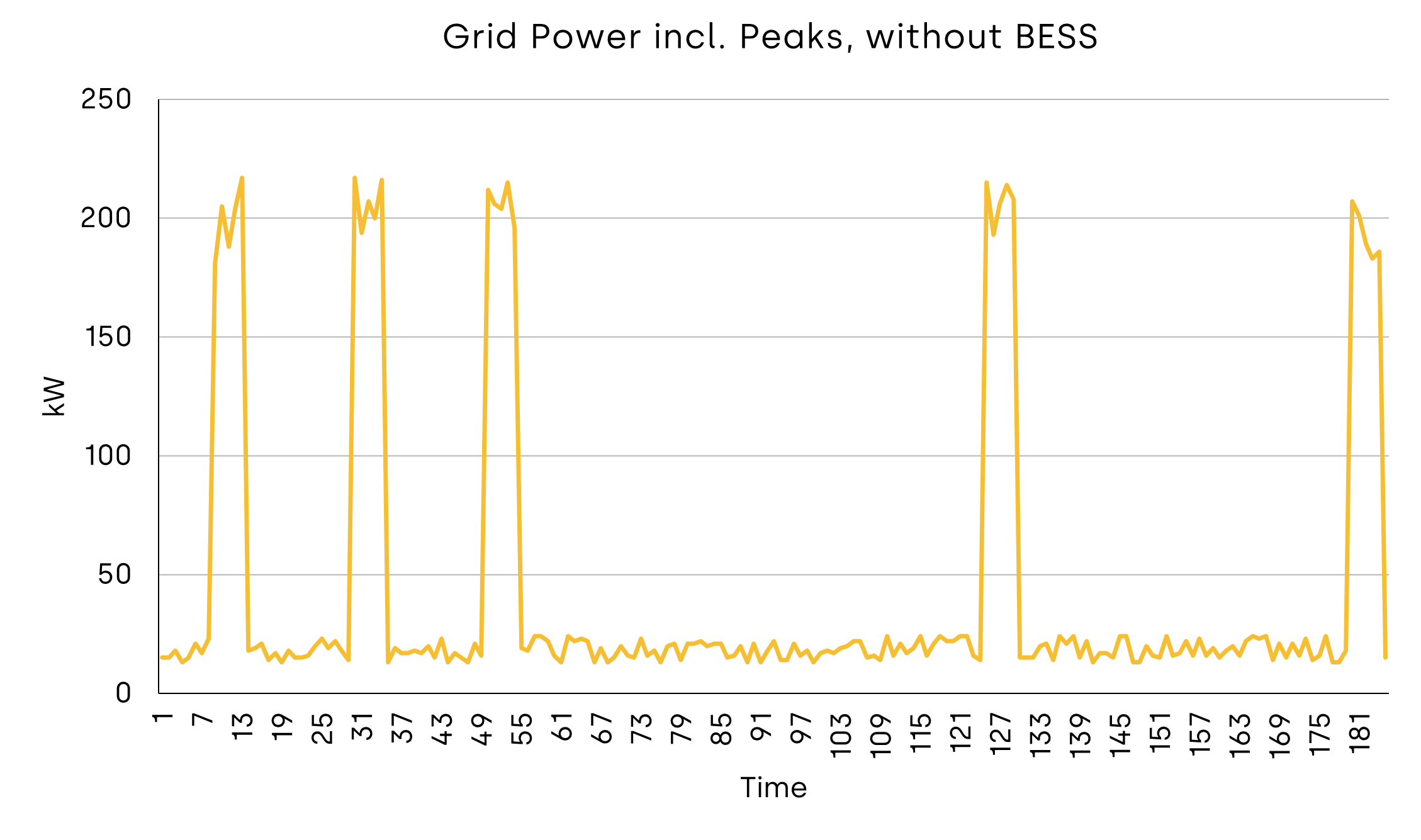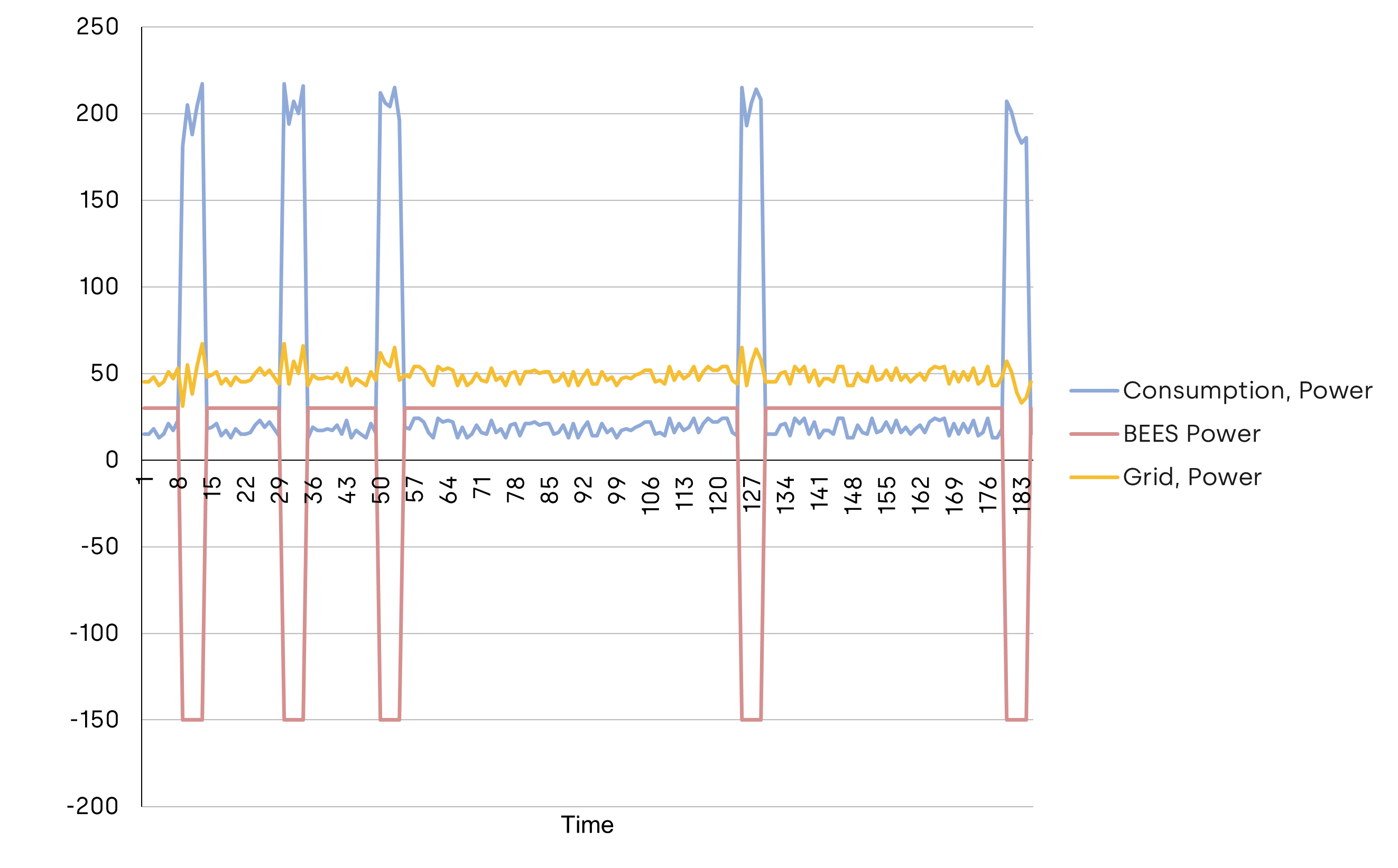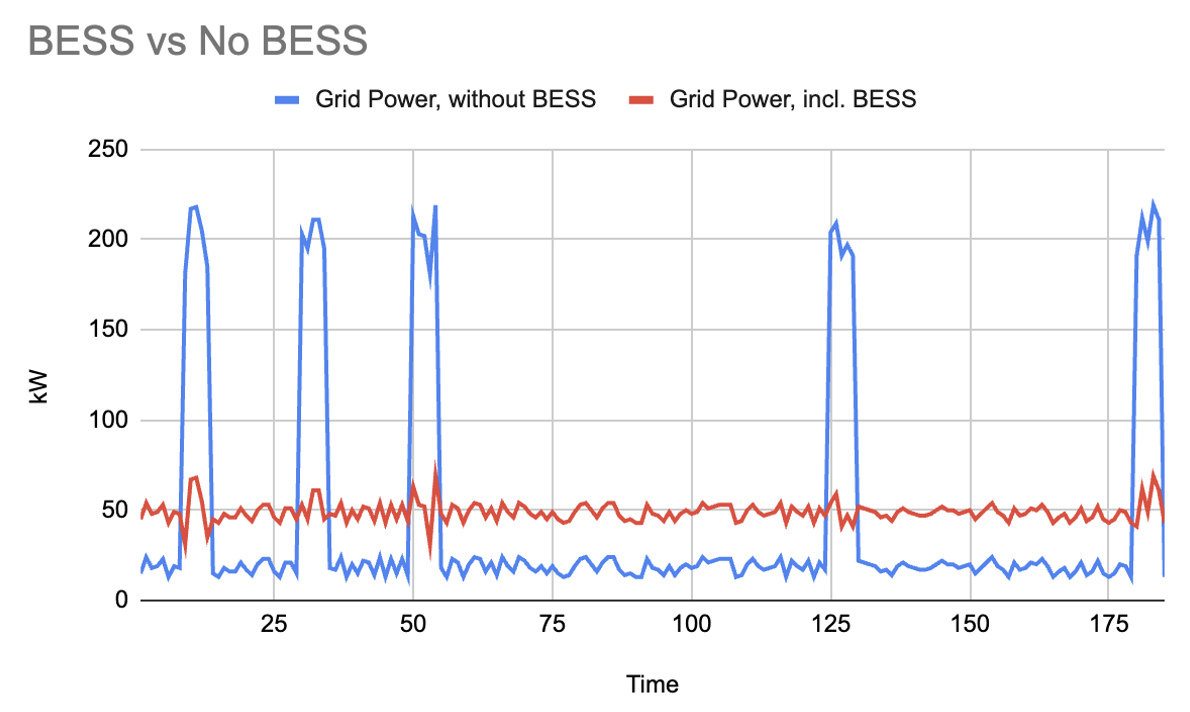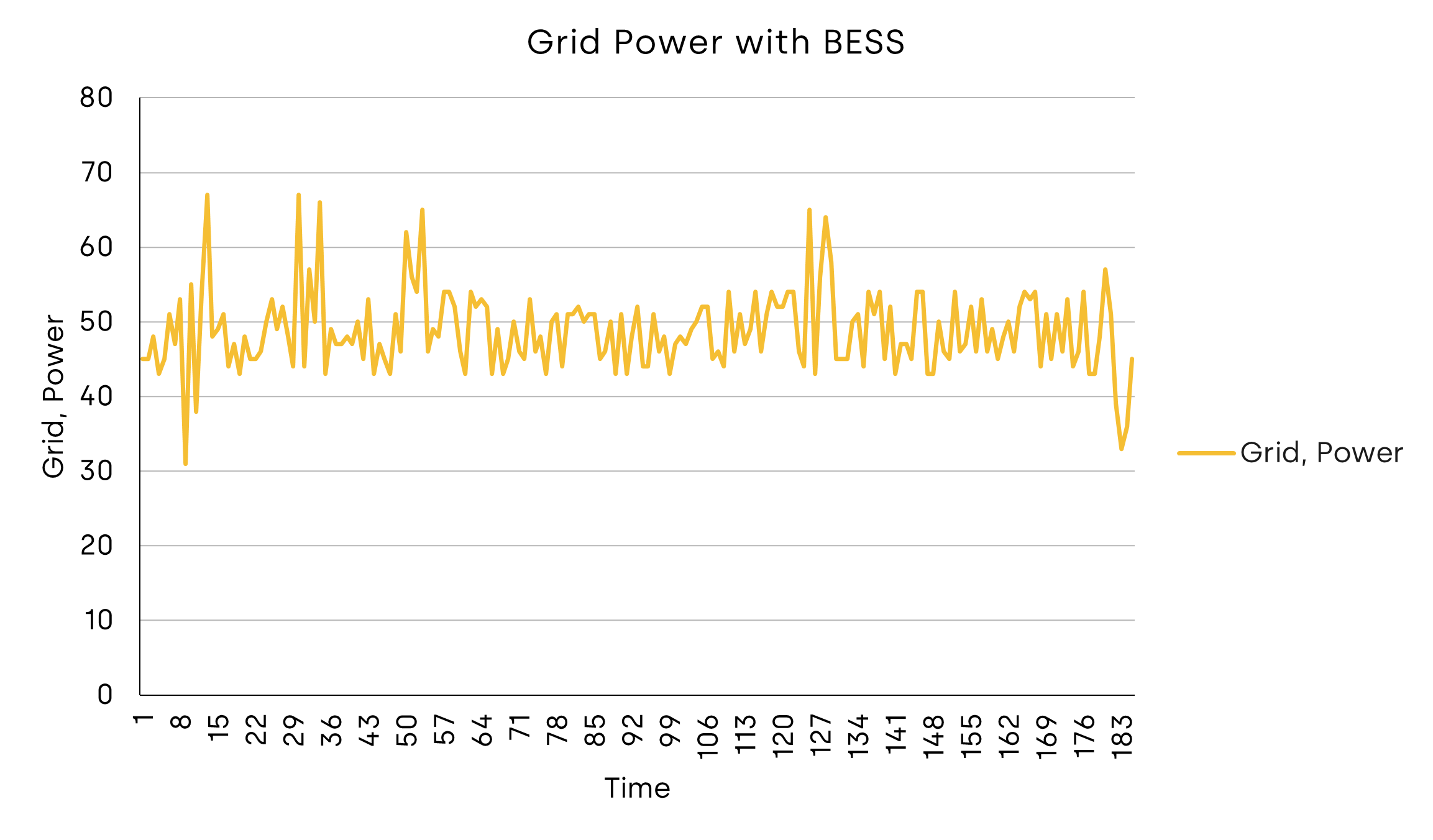/https%3A%2F%2Fpolarium.com%2Fwp-content%2Fuploads%2F2021%2F04%2FPortratt-Johannes-Lofgren-mitten.jpg)
Batteries: Understanding Peak Shaving
Chances are you have heard people talking about batteries last year, they are everywhere, and some people claim they will solve anything. I am a strong advocate for using the right technology, in the right place. Many technologies have a big role to play, but the biggest impact comes when utilizing the right technology, for the right things. Today, I'll explain how batteries could help you save cost on your energy bill, by cutting your power peaks.
17th January, 2024-
Before we start, we need to recap some fundamentals. When we talk about electricity, we have many parameters to care about. Today, I’ll mention two of many, but two very important ones! Kilowatt (kW), and kilowatt hours (kWh). Kilowatt is the power an application can generate or draw at a given time. To compare it with something more tangible, let’s say it is the equivalent of how much water comes out of a hose at any given time. Kilowatt hours, on the other hand, is how much water we get out of the hose during one hour. It is the energy or the power multiplied with time. This might sound simple, but politicians, professionals, and even hard-core engineers mix them up from time to time. Either by accident or because lack of understanding. Therefore, we recap them first, because they are crucial for understanding later concepts.
Cost buildup of energy bill
Bills around the world are built up based on different factors. Take Sweden for example, where it is an equation of the fusing current (the biggest power you can draw if you want to), the consumed energy (meaning the kWh, a.k.a the water out of the hose that you used) and the peak power (the maximum water you took out of the hose at any given time and interval). Often, the peak power cost is a multiplicator of the peak power for a single month. A customer using not so much energy (kWh), but having a very high peak (kW) at some time during the period, will pay more compared to someone without a peak. This is true even if their total energy consumed is the same.
Example graph
In the graph below, we can see the power over time. We can see that in this example, the base load (typical need for power) is somewhere around 20 kW. But at times we can see that some equipment is turned on that generates peaks in the power consumption of around 200 kW. This, will trigger a lot of extra costs for the customer! So, if it would be possible to resolve this in any way, the customer could save a substantial amount of money.

The obvious solution is to investigate if anything can be done to resolve this peak, for instance by lowering the power, and increasing the time. As an example; to charge your car for twice as long time, but at half of the power. This would result in half as high peaks. However, most of the time you want this power and your habits are often hard to change, that’s when a BESS could help you!
Peak Shave with BESS
One of the functions possible to use your BESS for is peak shaving. In simple terms, we charge the battery at times when electricity is cheap and power is low and store all the energy in the battery. Later, when you need peak power, we discharge the battery. This lowers the need for power from the grid, as part or the power needs comes from the battery and the other part comes from your grid. The direct effect on your energy bill is a lower one, as the multiplier used to calculate the cost drops substantially. In the below example from 200 kW to around 50 kW. 75 % of your peak power from the grid is therefore gone.

Summary
Below are two graphs where a BESS is connected the the load as in the first example. While the load from the application is low, the BESS allows itself to charge with 30 kW to build up energy. And, when the load from the application reaches peak, it instead discharges with 150 kW to offset the power needed from the grid with power from the BESS.
Remember the difference between kW, and kWh when you read this! kW is how much water you put out of the hose right now, and when you aggregate this, you store more water, or energy in this case. We store kWh, but need kW to offset peaks. 
The resulting power from the grid with a BESS installed becomes as the graph below. In simple terms explained, it will save you a substantial amount of money in your direct energy bill just be cutting your power peaks. Important to know here is that all consumption patterns are unique and you will have to match your BESS to your pattern. Luckily for you, this is something most BESS producers will do with their software in real-time after a run-in period.

If you have any more questions after reading this article, please write in the comments.
By: Johannes Löfgren
Johannes Löfgren is Delivery Project Manager at Polarium. Johannes leads project management of multiple parallel customer projects from site engineering through to operations handover.